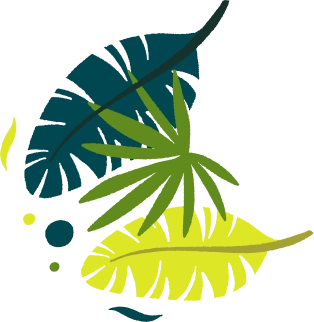


Rich in history, culture, and natural beauty, Vietnam has always found a place in the psyche of all those who venture out in search of travel destinations that can provide them with psychological and physical adventure or exploration.
From the busy streets of Hanoi to the tranquil landscapes of Ha Long Bay, Vietnam has something special in store for every traveler.
From ancient traditions to modern life, from outstandingly beauteous landscapes that leave one quite literally breathless—from the emerald green rice terraces of Sapa to the pristine beaches of Da Nang—Vietnam is a nation of an amazingly divergent set of experiences. For those in love with history, it oozes out from architecture, food, and warm people. Herewith lie some reasons why Vietnam should be on the travel radar:
Geographically, it varies from mountains and forests through beaches to rivers. It is a great venue for a lot of outdoor activities.
Cultural Heritage: It boasts over a millennium of history, besides numerous UNESCO World Heritage Sites that are on their lists, which include the ancient town of Hoi An and the historic city of Hue.
Delicious Food: Traditionally, Vietnamese cuisine uses fresh preparations and bold flavors. Do not miss the chance to taste pho, banh mi, and fresh spring rolls.
Affordability: Compared to other places in Southeast Asia, Vietnam could be called very affordable and accessible for all kinds of travelers.
In planning, consider taking a tour for value. Some of the tours to take in Vietnam include the following:
Hanoi City Tour: It is guided and most often covers visits to places like Ho Chi Minh's Mausoleum, the Old Quarter, the Temple of Literature, among other places. Most tours involve trying street foods.
Halong Bay Cruises: It is one of those listed UNESCO World Heritage Sites because of its emerald waters and thousands of limestone islands. The best option to see this bay in action is an overnight cruise because it comes with fantastic kayaking and swimming.
Guided trekking tours to Sapa offer great landscapes: here you will meet a lot of ethnic minority locals, explore the rice fields, and witness the majestic beauty of the mountains.
Mekong Delta tours: You see the Mekong Delta's quirky culture through one of its different boat excursions to floating markets, traditional villages, and lush landscapes. Bicycle and cooking classes are part of most tours.
Hoi An Cooking Classes: Besides the stunning beauty of architecture, Hoi An is also famous for its foods. Taking a local cooking class and learning to make a traditional Viet food dinner with fresh ingredients from the local market is highly recommended.
Cu Chi Tunnels Tours: Learn all about Vietnam during the time of war with the Cu Chi tunnels just outside Ho Chi Minh. Guided tours will give one an idea about the underground network the Viet Cong utilized.
The best time of visiting depends on what region you propose to visit.
North Vietnam - Hanoi, Sapa, and Ha Long Bay: The best time would be in September, November, and from March to May because of the tender dryness of the weather.
Central Vietnam: Indeed, for example, central Vietnam is warm and it doesn't rain much between the months of February through April.
Southern Vietnam: Ho Chi Minh City and the Mekong Delta visitation is rigidly confined to the dry season, December to April.
Visa Requirements: Check if your country requires a visa to visit the country. Visa upon arrival or even e-visa can be obtained for many travelers online.
Currency: Vietnamese Dong (VND)—Credit cards are available at most places in cities—but it would be wise to carry enough cash for a trip to many rural areas.
Getting around: Buses, trains, and domestic flights are well backed. Several apps like Grab can be used for a short ride in cities as well.
Etiquette within the culture: Respect local etiquette, especially that of temples and rural villages, and dress modestly; don't photograph someone without asking for permission.
What are the must-visit places in Vietnam?
Must-see: Hanoi, Halong Bay, Sapa, Hoi An, and Ho Chi Minh City.
What will a trip to Vietnam cost?
While the budget traveler may spend about $30-50 per day, the middle-class travelers may spend between $50-150 per day.
How safe is it to travel around Vietnam?
Generally, Vietnam is a very safe destination for tourists, but still, it's worthwhile to bear in mind certain regular safety measures.
How does one cross the country of Vietnam?
Long-distance travel shall involve domestic flights or buses, while for small distances, either taxis or rented motorcycles can be used.
What shall I carry with me on my journey to Vietnam?
Loose and lightweight clothing, casual shoes, raincoat, sunscreen, and insect repellent.
Is tap water drinkable in Vietnam?
Tap water in Vietnam is drinkable. It totaly clean and safe.
How can that food be local?
Vietnamese food has fresh ingredients and flavors. Pho, banh mi, and fresh spring rolls are easily among the top menu items.
Are there some cultural aspects with which I should be familiar?
One must wear modest clothing when visiting the temple, and shoes must be removed before entering one's home.
How would one describe or experience Vietnamese culture?
You can speak with the locals, cook typical Vietnamese food, or even take in some more mainstream performances.
How can I book tours in Vietnam?
The tours can be booked online through different travel agencies or at your destination upon arrival in Vietnam.
Get the latest information about our tours and special offers!